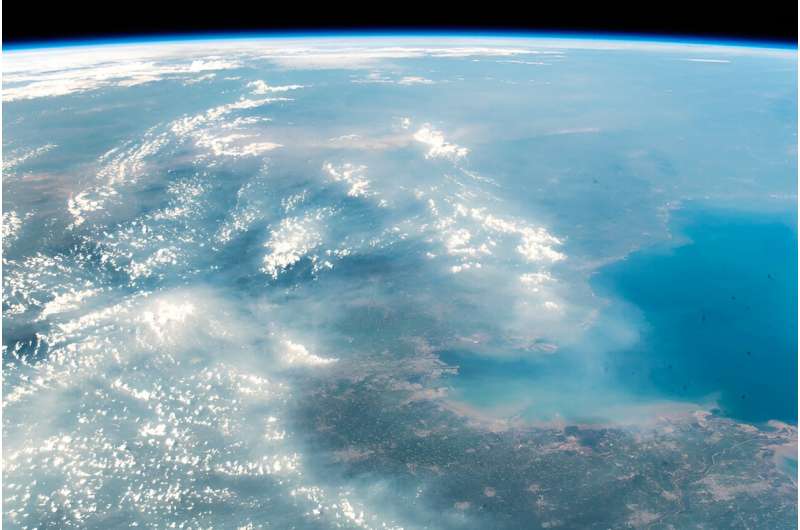This article has been reviewed according to Science X's editorial process and policies. Editors have highlighted the following attributes while ensuring the content's credibility:
fact-checked
peer-reviewed publication
trusted source
proofread
An early warning system for joint heat and ozone extremes in China

High temperatures exacerbate ground-level ozone production, resulting in a deadly combination of extreme heat and poor air quality that is especially dangerous for children, seniors, and people suffering from preexisting respiratory illnesses.
Like most of the globe, China is dealing with increasing temperatures and longer and more frequent heat waves. But, because of its rapid, energy-intensive development, it's also seeing increased production of the main precursors of ozone, volatile organic compounds (VOCs) and oxides of nitrogen (NOx). In a country as populous as China, this combination poses a serious threat to human health, especially in large urban areas such as Beijing.
Now, a team of collaborating researchers from the Harvard-China Project at the Harvard John A. Paulson School of Engineering and Applied Sciences (SEAS) and Hong Kong Baptist University has identified large-scale climate patterns that could be used to predict the co-occurrence of extreme heat and ozone days in China months before they occur. Like predictions for hurricane and wildfire seasons, the forecasts could help the government prepare resources and implement policies to mitigate the severity of the season.
The research was published recently in the Proceedings of the National Academy of Sciences.
"We've already seen record-breaking heat waves around the globe this summer, including in China, where local emissions have led to substantial ozone pollution," said Fan Wang, a visiting fellow at SEAS and the Harvard-China Project, Ph.D. candidate at Hong Kong Baptist University, and co-lead author of the study. "Our research could have important implications in the future that would allow agencies such as the Ministry of Ecology and Environment in China to prepare for high summer heat and ozone in springtime."
The research team, led by Michael McElroy, the Gilbert Butler Professor of Environmental Studies at SEAS and the faculty chair of the Harvard-China Project, and Meng Gao, professor at Hong Kong Baptist University and former postdoctoral researcher at SEAS, looked to past meteorological data and daily ozone levels to spot patterns that could be used to predict the season.
Because of the lack of long-term daily observations of ground-level ozone concentrations, the researchers used a sophisticated machine learning model to reconstruct levels back to 2005. Using this dataset, the team identified patterns in sea surface warming in the western Pacific Ocean, the western Indian Ocean and the Ross Sea, off the coast of Antarctica, that preceded summers with high heat and ozone in northeast China, including Beijing.
Warm sea surface temperatures in these regions lead to a decrease in precipitation, cloud cover and circulation across this region of China, known as the North China Plain, which is home to roughly 300 million people.
"These sea surface temperature anomalies influence precipitation, radiation and more, which modulate the co-occurrence of heat waves and ozone pollution," said Gao, co-first author of the paper and Associate of the Harvard-China Project.
The team's model correlated these anomalies with increases in heat waves and ozone about 80 percent of the time.
Governmental agencies could use these predictions to not only issue warnings for human health and agriculture but to reduce the components of ozone and its precursors in the atmosphere before the extreme heat waves hit.
"The ability to forecast prospects for unusually hot summers and unusually high levels of summertime ozone in China simply on the basis of patterns of temperature observed months earlier in remote regions of the ocean is truly exciting," said McElroy.
This paper was co-authored by Yihui Ding, Zhiwei Wu, Yangyang Xu, Xiao Lu, Zifa Wang and Gregory R. Carmichael.
More information: Meng Gao et al, Large-scale climate patterns offer preseasonal hints on the co-occurrence of heat wave and O 3 pollution in China, Proceedings of the National Academy of Sciences (2023). DOI: 10.1073/pnas.2218274120
Journal information: Proceedings of the National Academy of Sciences





















